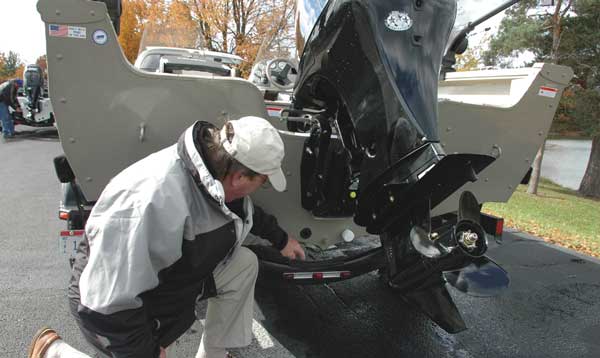
Get off the bank, and drop anchor in the middle of large lakes to greatly increase your duck harvest this winter.
When considering the purchase of my home, I hired a home inspector to give me a professional opinion of what condition it was in. The guy saved me a bundle by pointing out repairs that needed made and that I passed along to the seller, and he left me with a piece of advice that I apply annually to my boat and trailer rig as well as my abode: The inspector urged me to assign one hour a year to taking a walk around the exterior of my house, pad and paper in hand, looking for things that need attention or upgrading.
I find this time of year to be the best for me to take a similar tour of my boat and trailer rig.
Late autumn marks the end of my boating season, and represents a rare period when I’m not in a hurry to get out on the water and go fishing. I also know I have a couple of months during the offseason ahead to research and purchase the new gear or perform the service needed.
Since I started applying the inspector’s advice to my boat and trailer rig, I have been surprised by some of the items that needed attention yet remained beneath my radar during the busy boating season.
Peek at the prop
For example, when my prop briefly touched bottom shortly after launching at an unfamiliar ramp, the quick contact registered as a harmless “tick” as we set out for a day of play on the water. The episode was forgotten until the end of the season when the minor “bump” manifested itself in a bent blade tip that had probably robbed me of performance for the balance of the season.
Taking a close look at my prop during another autumn inspection, a telltale wisp of monofilament peeking from beneath the hub reminded me of the late summer day that a young guest’s fishing line had become entangled with the outboard’s lower unit. I pulled the prop and found a tight noose of line wound around the shaft that could have eventually cut into the seal and compromised the lower unit.
Look at the tires
The integrity of trailer tires is easy to take for granted, but it’s important to remember that here in the South they deteriorate over time from the UV rays of the sun and the ozone in the air just as quickly as the tires on your tow vehicle.
Check to make sure each trailer tire has the proper amount of air pressure and tread remaining, and look for sidewall cracking, bulges, leaked grease and other obvious signs of wear or damage. Check the wheels and hubs too, looking for loose or missing lug nuts and paying attention to areas of excessive rust.
Go over your lines
Look closely at your boat’s dock and anchor lines. Because it is light in weight for its strength and diameter and floats, polypropylene is popular as line aboard boats, but it degrades quickly from the damaging UV rays from the sun.
Look for “splinters” on poly rope or frayed areas on all the lines, and replace them as needed. Unwind and inspect your trailer’s winch rope or strap for signs of wear as well, and look closely at your transom straps or buckles to see if they are looking worn and due for replacement.
Turn-ons
Turn on your boat’s navigation lights and test your trailer lights to make sure everything lights up when it’s supposed to. Replace burnt-out bulbs or fuses, and schedule time to fix the wiring if needed. Give the bilge pump a test too; that’s one item that you need to work when called upon, and you can’t always determine its condition by looking at it. Bilge pumps get ugly fast, but good ones will serve reliably for years despite their worn appearance.
That’s not true with most boating equipment. Make time to give your boat and trailer a good looking-over each year, and you may be surprised at what you see. My own advice is, if it looks worn out it probably is. Or soon will be. And replacing it sooner buys more boating time later.


